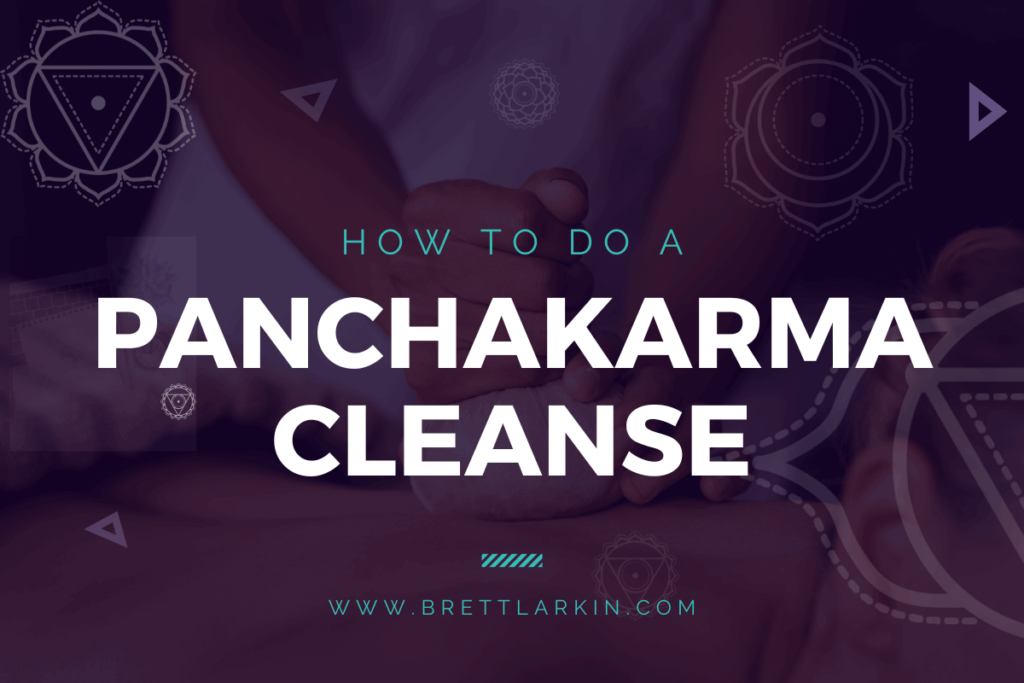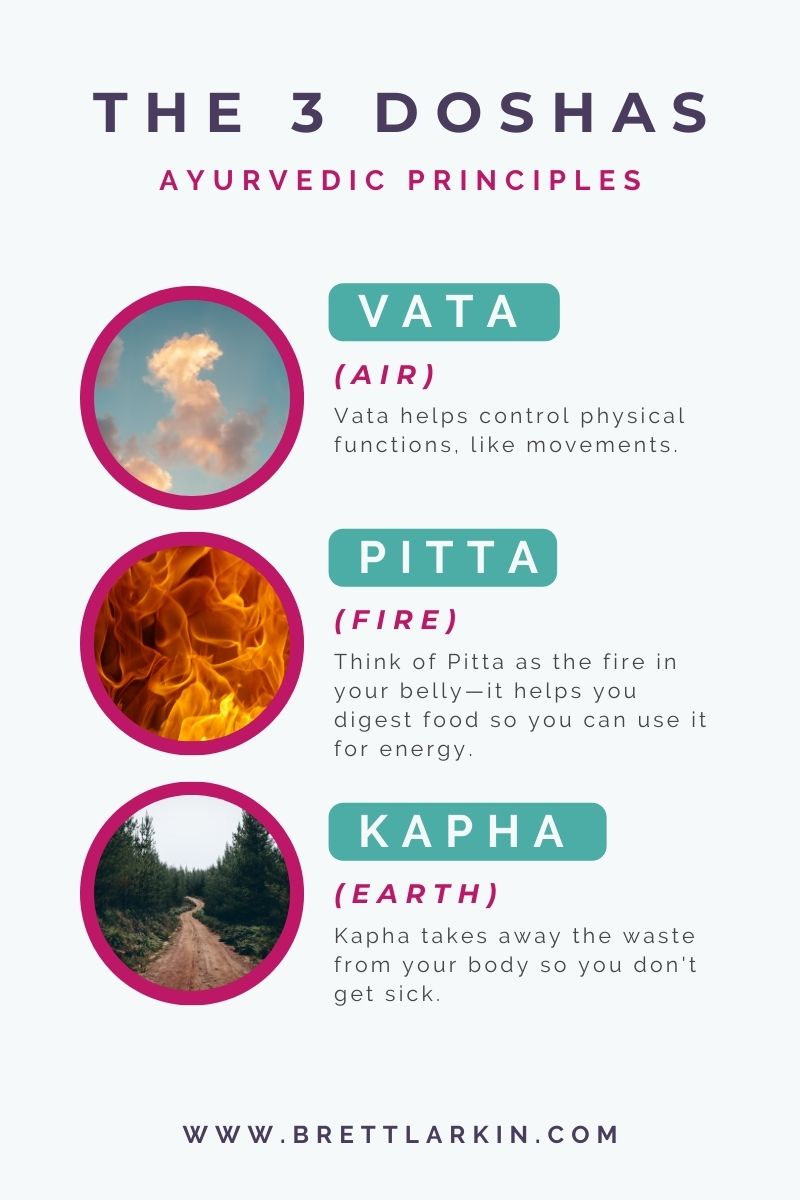
The voyage of self-care called Panchakarma is not just a cleanse but a natural celebration of well-being, guiding you toward a refreshed and revitalized version of yourself.
What Is Panchakarma In Ayurveda?
The ancient wisdom of Ayurveda offers the body and mind cleansing with Panchakarma. Translating to “five actions,” Panchakarma is a comprehensive detox and rejuvenation tradition that aims to restore balance to the body’s doshas (Vata, Pitta, Kapha) and eliminate toxins (ama).
Benefits Of Panchakarma
This ayurvedic cleansing offers a cascade of benefits that rejuvenate the body, mind, and spirit. You’ll notice:
- Elimination of Toxins: The summit of detox mountain, this cleanse helps your body flush out all those unwanted toxins.
- Balancing Doshas: Like a harmony dance for your three doshas it brings them back to balance and prevents any imbalances that could cause disease.
- Improves Digestion: Your GI tract and digestive fire get the VIP treatment and your metabolism gets a boost.
- Enhanced Energy Levels: Bye-bye fatigue! As you lose toxins and the doshas balance you have access to new levels of energy.
- Improved Immune Function: Say hello to a stronger immune system! Panchakarma keeps your system clean and balanced, making you less prone to getting disease.
- Skin Health: Cleansing is known to clear up skin issues and give you a healthy, happy complexion.
- Weight Management: Panchakarma tackles things like a slow metabolism and toxin buildup to help you on your fitness journey.
- Enhanced Mental Well-being: It’s not just for the body – it’s a mood booster too! It clears out the mental clutter and promotes emotional balance.
- Preventive Health Benefits: Think of Panchakarma as your health guardian. Tackling imbalances at the root is like a superhero cape against various diseases, keeping you healthy for the long haul.
Who Needs A Panchakarma Cleanse?
If you are seeking a natural approach to your health issues and overall lifestyle, this ayurvedic cleanse will remove toxins from the body and mind. Panchakarma treatments are suitable for most people especially if:
You suffer from chronic illnesses
Ayurveda therapies are not offered widely in the West so this may be your first introduction to the panchakarma procedures. If you suffer from any medical condition including skin disorders, degenerative diseases, or diabetes this cleansing ayurvedic treatment could bring you some relief of symptoms.
Your doshas are out of balance
Those with imbalances in the three doshas (Vata, Pitta, Kapha) may benefit from Panchakarma, as it aims to bring these vital energies into harmony.
You need to eliminate toxins
Are you feeling fatigue, digestive issues, or mental fog? Your body may be storing fat-soluble toxins therefore you may find this cleanse beneficial. The cleanse is designed to eliminate most toxins, promoting a refreshed and revitalized state.
Your body-mind connection needs a reset
Those facing high levels of stress, anxiety, or brain fog can find Panchakarma beneficial for its stress-reducing practices, promoting mental clarity and emotional stability.
You’d like to take preventative steps in fighting disease
Even without specific health concerns, if you are interested in preventive health and maintaining optimal body functioning you can undergo Panchakarma. It serves as a proactive measure to prevent imbalances and promote long-term health.
Panchakarma Treatment Procedure
A traditional cleanse would be completed over many days and overseen by a qualified Ayurvedic practitioner. The practitioner would first give you a doshic evaluation to understand your unique needs. Then they would plan out which treatments would serve your life best.
5 Steps of Panchakarma Procedure
Once your practitioner has evaluated your needs they will consider if your needs include any or all of these five elements.
- Vamana (Therapeutic Vomiting): This step eliminates excess Kapha dosha. It involves the administration of medicated substances to induce controlled vomiting, expelling accumulated toxins from the upper respiratory system and digestive tract.
- Virechana (Therapeutic Purgation): Virechana targets the Pitta dosha and involves the intake of purgative substances to induce controlled bowel movements. This process eliminates Pitta-related impurities and toxins from the body.
- Basti (Medicated Enema): Basti is a crucial step for balancing Vata dosha. It involves the introduction of medicated oil or decoctions into the rectum, allowing for the removal of accumulated toxins and promoting nourishment of the colon.
- Nasya (Nasal Administration): Nasya focuses on clearing the nasal passages and treating disorders related to the head and neck. Medicated oil or herbal preparations are administered through the nose to cleanse and rejuvenate the upper respiratory tract and the mind.
- Raktamokshana (Bloodletting or Detoxification of Blood): This step is not always included and is reserved for specific conditions. It involves the removal of a small quantity of blood to eliminate impurities and toxins from the bloodstream.
How Many Days Panchakarma Treatment
To experience the full effect of these rejuvenation therapies on your nervous system it is best to spend at least 7 days aiming to eliminate toxins, achieve hormonal balance, and clear the digestive system. To do this cleansing the Ayurvedic way follows the three stages, Preparation, Detoxification, and Post-Treatment. Below is a sample schedule someone on this cleanse might follow.
Day 1 – 2 (Preparation stage):
Just like the name suggests, these are your prep days. Start by eliminating sugar and processed foods from your diet. Use these days to sync into the natural rhythm and flow of the Ayurvedic lifestyle.
- Morning: Herbal teas or mild herbal infusions
- Breakfast: Light, easily digestible foods
- Mid-morning: Ayurvedic herbal supplements
- Lunch: Simple and nourishing meal
- Afternoon: Rest, Reflection and Relaxation
- Evening: Light dinner, early bedtime
Day 3 – 7 (Main Detoxification Stage):
These days consist of participating in the five treatments selected based on your doshic evaluation.
- Morning: Administer specific Panchakarma treatment (e.g., Vamana, Virechana, etc.)
- Afternoon: Rest, Reflection and Relaxation
- Evening: Light dinner, early bedtime
Day 8 – 14 (Post-Treatment Stage):
- Morning: Follow-up consultations with the qualified practitioner
- Breakfast: Gradual reintroduction of foods
- Mid-morning: Ayurvedic herbal supplements
- Lunch: Balanced and nourishing meal
- Afternoon: Gentle yoga or walks
- Evening: Light dinner, maintain an early bedtime
Panchakarma Treatment Side Effects
It is important to be aware of potential side effects that you may experience during or after the treatments. These side effects vary based on individual factors and the specific procedures.
Common side effects may include:
- Fatigue: The body undergoes a significant detoxification process which can sometimes lead to temporary fatigue as the system adjusts.
- Aches and Pains: As toxins are released and eliminated from the body, some individuals may experience temporary muscle aches or pains.
- Nausea: Procedures like therapeutic vomiting (Vamana) can induce temporary nausea or discomfort in some individuals.
- Digestive Changes: Panchakarma involves purgation (Virechana) and enemas (Basti), which can lead to temporary changes in bowel habits or digestive patterns.
- Skin Reactions: Rashes or mild irritations may occur as the body eliminates toxins.
- Emotional Release: This cleansing is holistic, and emotional detoxification may occur, leading to temporary emotional ups and downs.
Panchakarma Treatment Steps At Home
Of course, I am not suggesting you participate in induced vomiting or any blood treatments on your own at home, but you can take the spirit of this cleansing into your own hands at home by following some simple steps!
Rest, Reflection, and Relaxation
This section was casually mentioned in the sample schedule but may be one of the most critical steps and can easily be completed on its own. During the time you are participating in these treatments, you will need to keep your lifestyle to a minimum. This will include time alone for self-reflection, yoga, and journaling.
Spend a couple of days in rest and reflection without any disruptions. See what effect that has on your nervous system.
Eat Like Panchakarma
When you are cleansing your body and mind with Ayurveda, what you eat is VERY important. Everything you eat affects your digestive fire. Easily digestible foods like basmati rice or kitchari are gentle on the digestive tract, requiring minimal effort to break down and absorb. Avoiding dairy products and animal proteins will give your stomach a rest. An Ayurvedic diet is always available to you at home to encourage cleansing.
If you have ever done any type of cleansing with a strict diet, you know that this lifestyle change is hard mental work where personal development occurs quickly. When you regulate your food intake through the Ayurvedic lens strictly it can be a treatment practice all on its own.
Self Oil Massage
An integral part of Ayurvedic self-care, Abhyanga involves the application of warm, herb-infused, oils to the body in rhythmic, intentional strokes. Beyond the surface, this self-massage not only nourishes the body’s largest organ but also permeates deeper tissues, promoting relaxation and enhancing the mind-body connection.
Neti and Nasya
Neti, a nasal cleansing technique using a saline solution, helps flush out impurities and clear nasal passages. Performing Neti involves pouring the saline solution through one nostril and allowing it to exit through the other, effectively removing allergens, dust, and excess mucus. This simple yet powerful practice not only supports respiratory health but also enhances mental clarity and focus.
Complementing Neti is Nasya, an Ayurvedic nasal oil application. In this at-home ritual, a few drops of warm, herb-infused oil are gently administered into each nostril. Nasya lubricates and protects the nasal passages, promoting smooth breathing and reducing dryness. Beyond its physical benefits, Nasya is believed to soothe the mind and alleviate stress.
Closing Thoughts
The profound benefits of Panchakarma are aplenty! This ancient Ayurvedic practice transcends the realms of mere detoxification. Panchakarma isn’t just a yogic cleanse; it’s a holistic rejuvenation of the body, mind, and spirit. From eliminating toxins and balancing doshas to fostering radiant skin and emotional equilibrium, undergoing this type of treatment will improve your general well-being. So, as you receive the healing embrace of Panchakarma, envision a refreshed and revitalized you, ready to embark on the path of sustained health, vitality, and inner balance. May this ancient ritual be your guide to a life of flourishing!
Next Steps
- If you’re interested in practical kriya yoga as a way to improve your daily life and relationships, check out my Yoga for Self Mastery course.
- Order my Yoga Life book for a practical guide to creating balance in your life through yoga.
- Check out my YouTube channel and find some yoga classes that you can try out for yourself!
FREE Chakra Balancing Audio Track + Journaling Prompts

YOU MIGHT ALSO LIKE
- My Homemade Immunity Tea Recipe For Winter
- How To Do An Ayurvedic Panchakarma Cleanse At Home (Safely)
- Ayurveda Food Combining: The Key to Balanced Digestion
- How To Reduce Body Heat According To Ayurveda
- Types Of Agni In Ayurveda And How To Balance
- How To Balance Doshas And Step Into Your Powerful Self
- The Eight Branches Of Ayurveda: Guide To A Happy Life
- Yoga for Vata Dosha: Practice Poses and Tips
- Yoga for Pitta Dosha: Practice Poses and Tips
- Yoga for Kapha Dosha: Practice Poses and Tips
- Jal Neti Kriya: The Best Thing You Can Do To Clear Your Head Right Now
- My Exact Ayurveda Morning Routine For Yogis
- The 6 Stages of Disease in Ayurveda
- Discover Your Ayurvedic Constitution and Balance Your Mind, Body, and Spirit
- Understanding the Basic Principles of Ayurveda for Yogis
- 3 BEST Ayurveda Schools for a Holistic Ayurvedic Certification
- What Are Nadis? Your Guide to Energy Channels In Your Body.
- What Is An Ayurvedic Diet? Foods For Your Doshas
- A Day Around the Doshas: What I Learned When I Followed the Ayurvedic Clock











